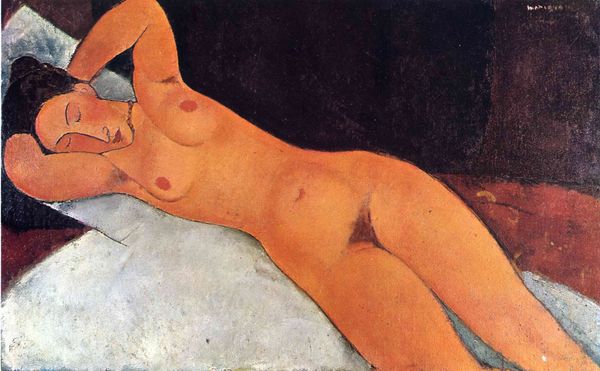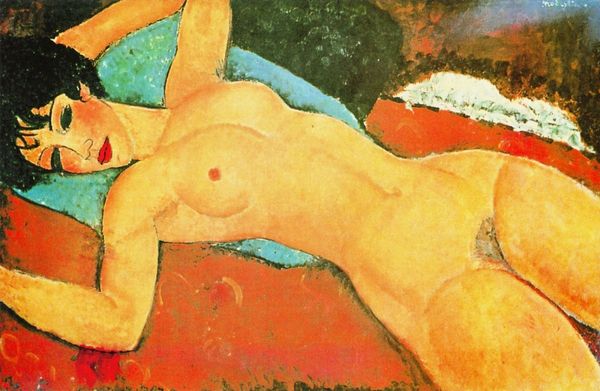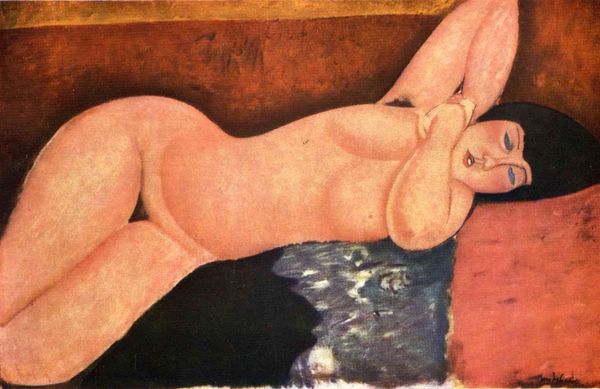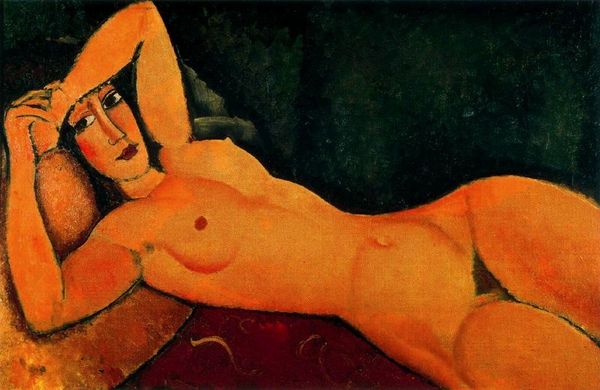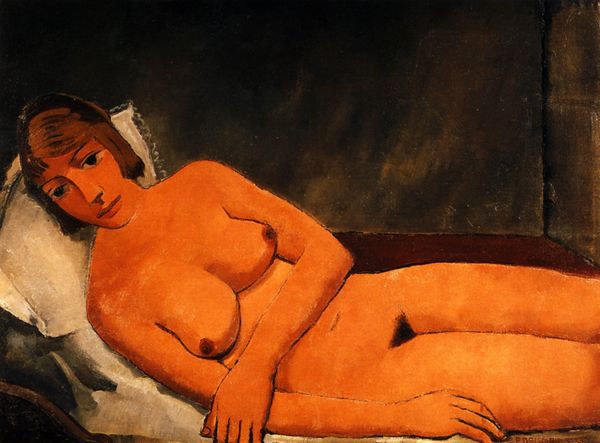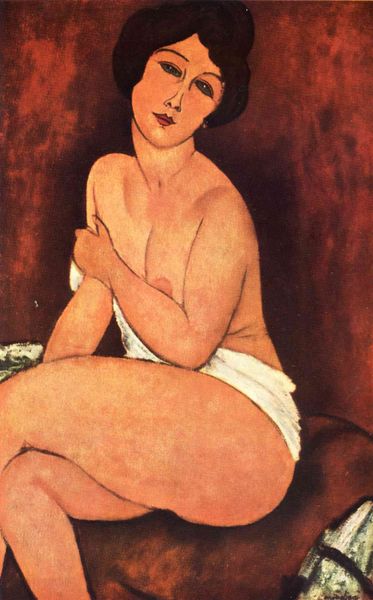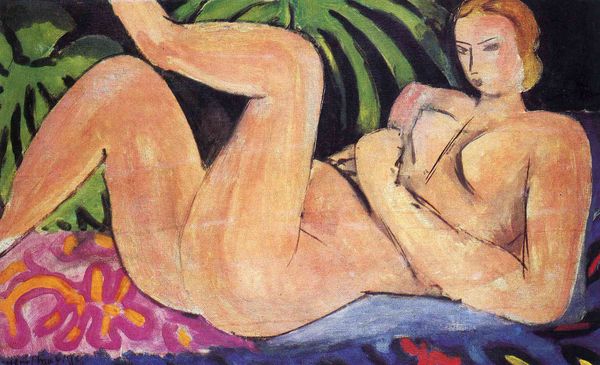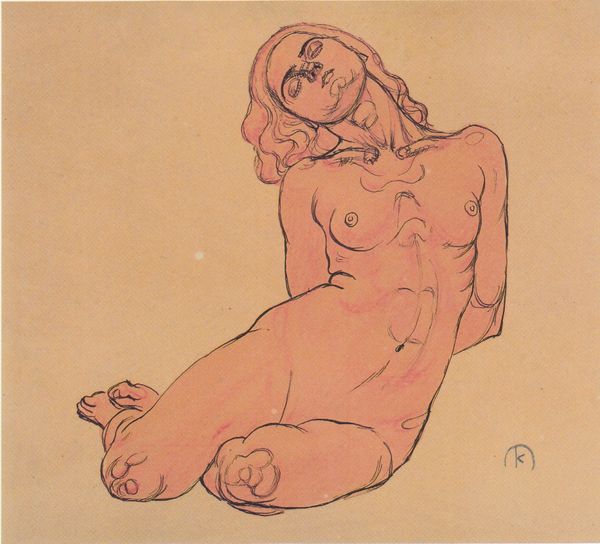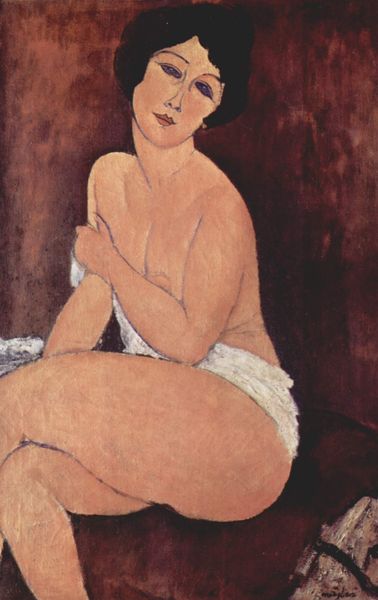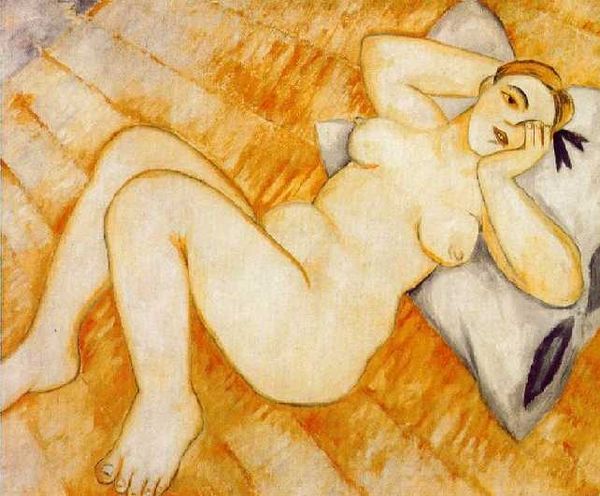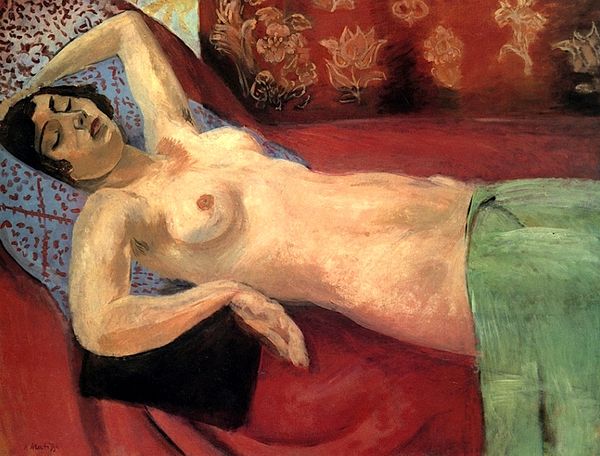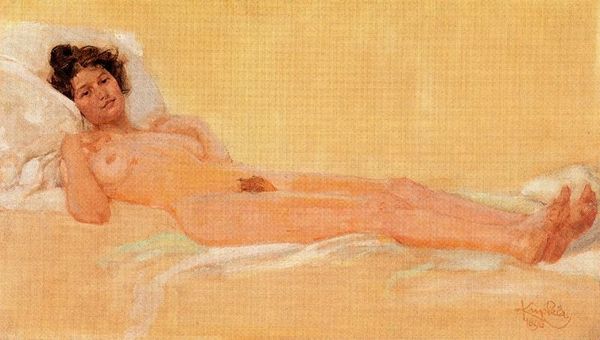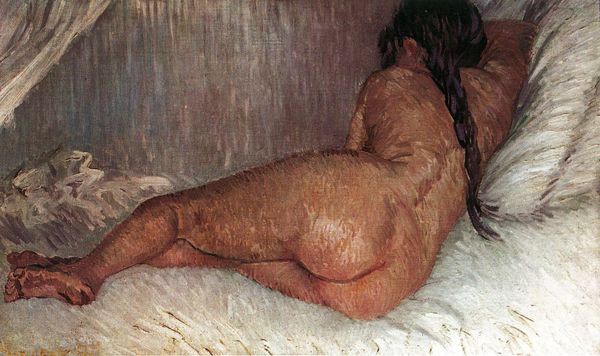
Dimensions: 89 x 146 cm
Copyright: Public domain
Curator: At first glance, this nude by Modigliani, titled "Lying Nude" from 1917, immediately strikes me as incredibly sensual. There is a languid quality to the pose, and the color palette gives it a warmth. Editor: Warm indeed, and what's interesting to me are the oil paints and application, resulting in a slightly rough surface that adds to the texture of both the body and the setting. There is nothing illusionistic here, everything calls attention to its facture. Curator: Yes, precisely. Look how the curves of the figure are emphasized not only through line, but also by the careful distribution of light and shadow. The forms are simplified, but with an elegant contour that lends the work an abstract quality. I find this really underscores the painting's self-contained structure. Editor: And the materiality directs us to imagine the studio, the labor behind it, the choices regarding the canvas, paints, and brushes, right? How many similar paintings, I wonder, were produced in that space? It’s a visual record of a kind of… production line. Curator: You highlight the historical processes inherent to the art object! What truly captivates me, though, are those eyes. Notice the gaze is direct yet melancholic, challenging any straightforward interpretation of mere objectification, no? They provide another plane through which we may evaluate this composition. Editor: Perhaps, but I also wonder about the sitter. What were the economics behind her agreeing to be nude? Who profited and who simply labored? It’s never just about an arrangement of pigment on a canvas, the painting itself being but one stop on a longer production line involving different people, materials, and systems. Curator: You contextualize so productively. Nevertheless, by reducing this painting to just the material inputs risks marginalizing what is present on its plane: an emotionally resonant structure, mediated through specific artistic languages, through which viewers will be drawn into dialog with its arrangement of space, color, line, and subject. Editor: That potential, I agree, hinges upon the many unseen networks—studios, workshops, economies—that shape how artworks are made and valued today. A look at process encourages viewers to re-assess aesthetic judgement, revealing embedded systems of artistic labor.
Comments
No comments
Be the first to comment and join the conversation on the ultimate creative platform.
